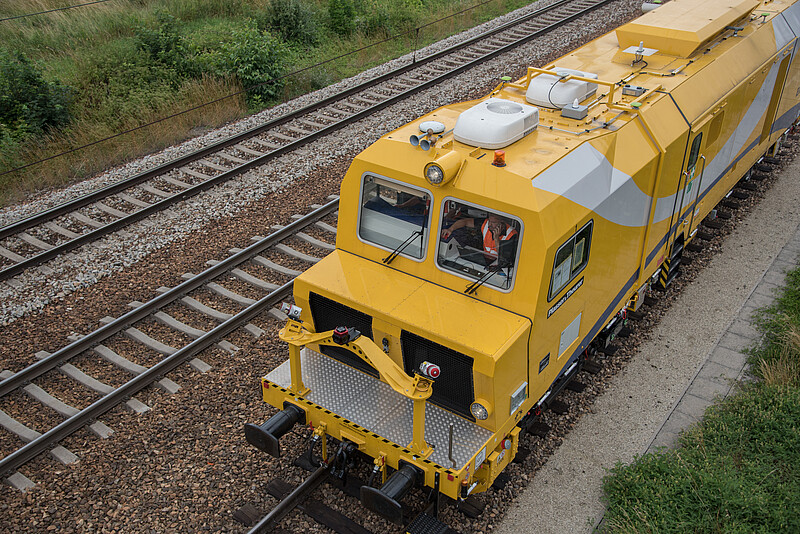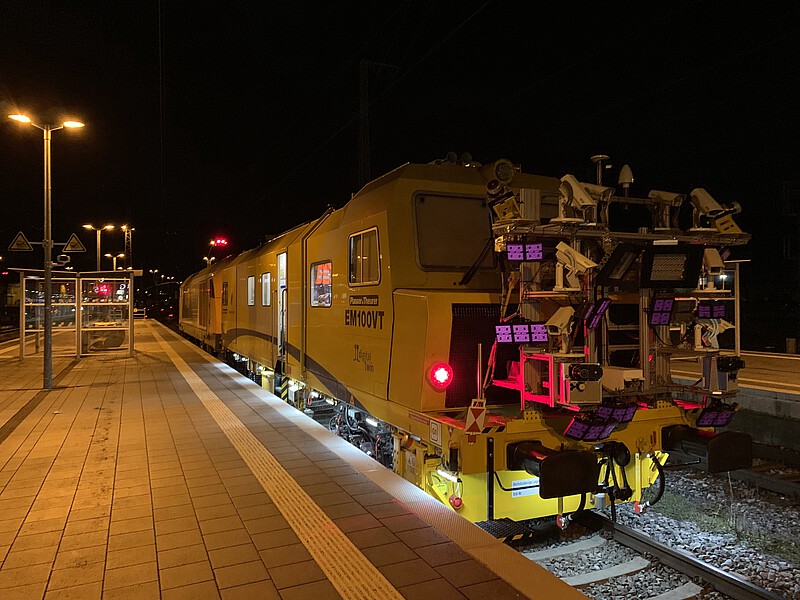Digitalised Maintenance
The quality of the rail network in Germany is assessed annually in the Infrastructure Status and Development Report (IZB) according to eight quality indicators. This report provides an overview of the quality of the network and the maintenance requirements.
In 2019 there were 433 infrastructure deficiencies in the Deutsche Bahn network, i.e. deficiencies where speed had to be reduced. Digitalised maintenance should help to prevent future deficiencies. The core of digitalised maintenance is the knowledge of the condition – selectively (inspection) or continuously (condition monitoring).

© Plasser & Theurer
Implementation
For the infrastructure, there are various approaches to implementing the data collection:
– with measuring trains and measuring robots in the track
– with cameras and sensors/laser scanners, which are installed on trains in regular operation and measure continuously
– with cameras and sensors in the infrastructure, including the track as a sensor (glass fibre – fibre optic sensor)
– by measurements from the air over drones
– standardised by employees with input in apps
For many suppliers of measuring sensors and measuring vehicles, the evaluation of the values obtained by means of data analysis is part of the service, with the objective of a Digital Twin. Thus, each maintenance measure provides huge amounts of data (plant data, geometry data and working parameters).
Previously, the necessary planning data for maintenance work or track renewal had to be recorded by means of track inspections and measuring runs. Conventional manual or mechanical methods achieve very low measuring speeds (approx. 5 km/h) and reduce the capacity of the system by the necessary additional closing breaks before and after track construction work.
The test measuring vehicle EM100VT ("VT" stands for Virtual Track) serves as a carrier platform for the development and testing of new measuring systems and represents an important basis for digital product development, as it opens up new ways of cooperation between maintenance machine and infrastructure.
The EM100VT uses a newly developed stereo fixed point measurement system consisting of two high-speed cameras with infrared lamps. With a speed of up to 100 km/h it scans the track and its immediate surroundings, generates digital, three-dimensional images together with position data, monitors the track position and can pass on all this data in processed form to other machines (e. g. a tamping machine).
In addition to the resulting digital advantages such as fast, precise planning and exact documentation, damage prediction and predictive maintenance, there are other benefits:
– Proof of quality for services rendered can be viewed directly by the client.
– Fewer people are present in the danger zone of the machines, as track inspections and control work of high quality can be carried out from the office.
Recommended specialist books:
Rees, Dagmar, Digitalisierung in Mobilität und Verkehr
https://www.pmcmedia.com/en/all-titles/rail/262/digitization-in-mobility-and-transport
BMVI/DB AG (Hrsg.), Infrastruktur für eine starke Schiene
https://www.pmcmedia.com/neuerscheinungen/413/infrastruktur-fuer-eine-starke-schiene

